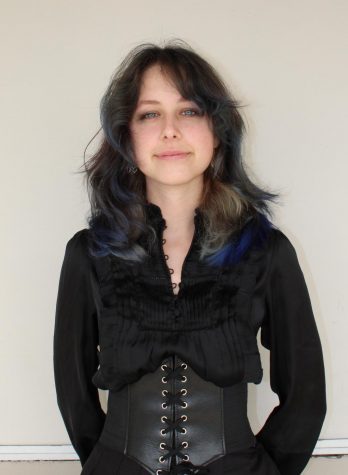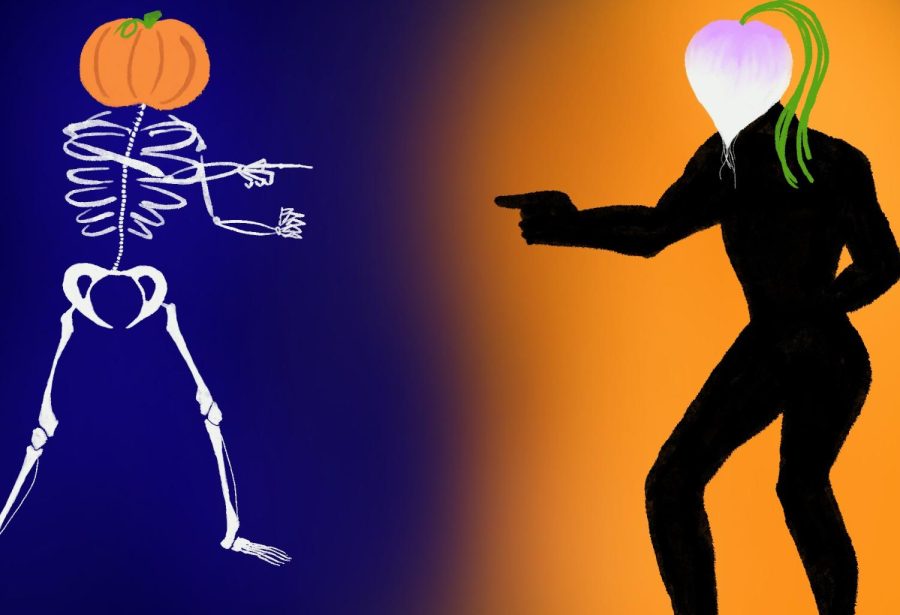Festivals and Traditions: The Ancient Origins of Halloween
Before pumpkins started being carved, people carved turnips for Ol’ Hallows Eve.
Today, Halloween has become a festive day filled with fun costumes, candy, and jack-o-lanterns. However, the history behind these holiday practices are not as well known.
To start off, the name for the holiday has a history of its own. The word “Halloween” was popularized by the national poet of Scotland, Robert Burns. Burns wrote a poem of the same name, which focuses on the traditions and activities associated with the fall season in 18th-century Scotland. The name itself comes from 2 words put together: the word “Hallow” means “holy person” and refers to the saints celebrated on the November 1st holiday of All Saints Day. The latter part of the word, “een”, is a contraction of the word “eve”, meaning evening before. So, the term “Halloween” is a way of saying the night before All Saints Day, which is a Christian holiday in which participants feast to celebrate the saints who have departed from Earth.
Historians have agreed that many of the symbols and ideas associated with Halloween have come from the ancient Celtic festival of Samhain. For those who lived during 1200 BC in Ireland and Northern Europe, Samhain marked the end of summer and kicked off the Celtic new year. Participants told each others’ fortunes, as well as dressed up as beastly creatures in hopes of scaring the bad spirits away. Tricks and pranks were often played by people, yet often blamed on fairies and spirits during the period in which supernatural powers were said to have come to earth.
Today, while trick-or-treating has become a kid-friendly activity revolving around candy, its roots were very different. In medieval England, people known as “soulers” would go around begging rich homeowners for treats known as “soul cakes” on Halloween. These soulers said they would pray for the peoples’ souls in return for the cake. They traveled around Europe, dressing in disguises, playing music, and playing tricks. The practice of “souling” was reportedly brought to the United States in the 1800s by Irish and Scottish immigrants. Modern-day trick-or-treating didn’t catch on until 1920. Although it is very popular today, even in the 1950’s, the practice was seen as controversial.
Black cats and jack-o’-lanterns, 2 common Halloween symbols, have a history of their own. Black cats were portrayed as friends to witches in the Middle Ages. So, settlers’ fear of associating with any devils or witches is likely the cause of the history of distrust of black cats in America.
Jack-o’-lanterns, on the other hand, originate from an Irish myth in which a man, known as Stingy Jack, captures the Devil in a tree and is left with only 1 lump of coal for the night, of which he puts into a turnip to carry around. Although today, jack-o’-lanterns are carved out of pumpkins, turnips, potatoes, and even beets were lit up to scare away evil spirits.
While the origins of the holiday may be somewhat dark, today, Halloween remains a time for costumes, trick-or-treating, decorations, and celebration.
Your donation will support the student journalists of Campolindo High School's The Claw. Your contribution will allow us to produce more issues and cover our annual website hosting costs.

Freshman Ruthie Stoll is a dancer, tennis player, and foodie. She grew up in a small town in Pennsylvania, moved to the Bay when she was 4, and just graduated...

Senior Karina Aza has been drawing since before she can remember, honing her traditional art skills: “[art is] something I’ve been doing since I was...


